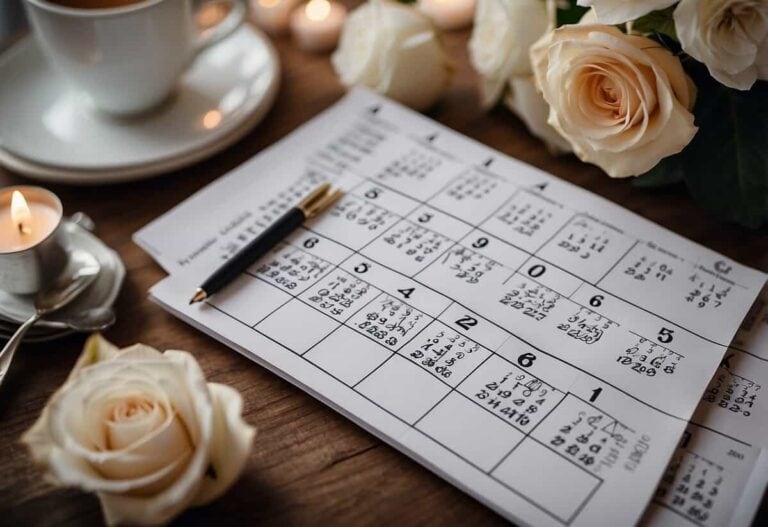How Does a Wedding Go Step by Step: Your Essential Guide to Nuptial Traditions
Organizing a wedding can be a monumental task with a multitude of details to consider, from setting your budget to crafting a guest list that accommodates both your dreams and your venue’s capacity. Whether you’re aiming for a traditional ceremony imbued with time-honored customs or a modern wedding that reflects your unique style, the steps you’ll take along the journey are critical to bringing your special day to life. By navigating through wedding planning phases such as selecting vendors, sending out save-the-dates, and finalizing your wedding registry, you piece together the celebration one step at a time.
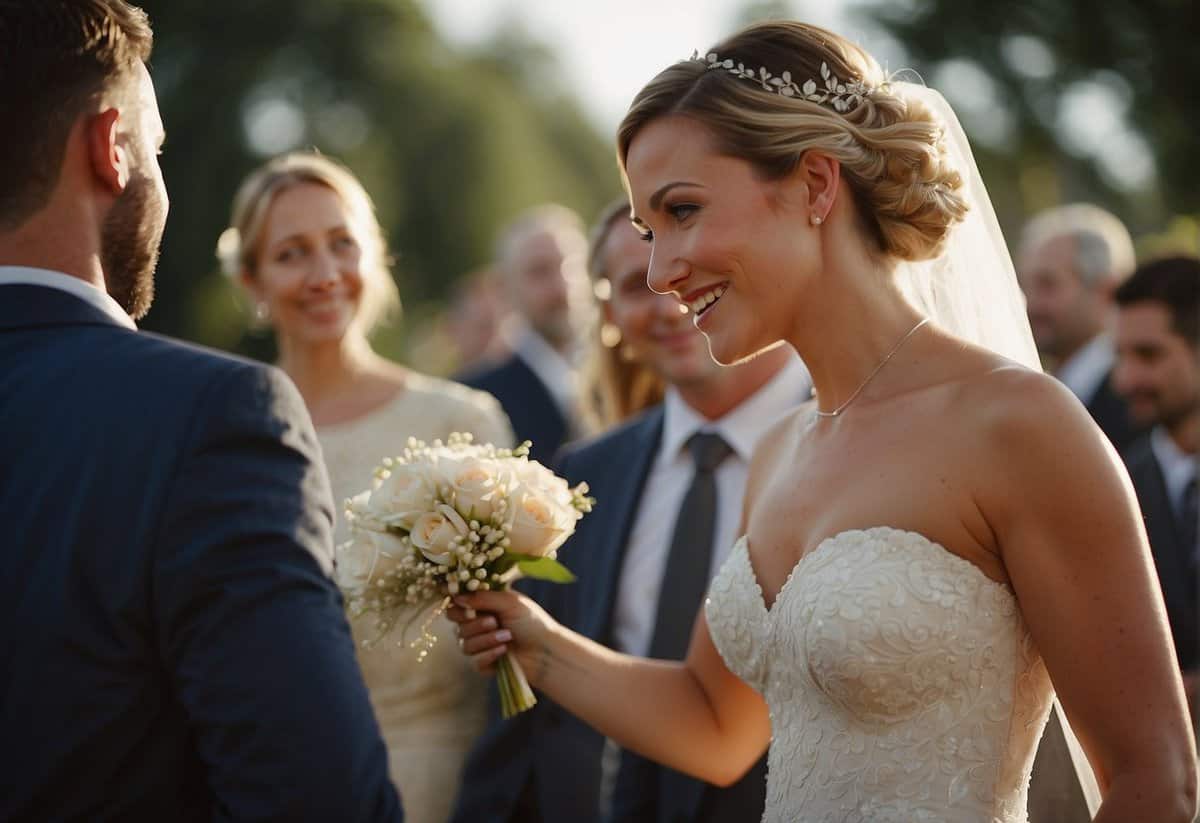
As you draw closer to the big day, the focus shifts toward the precision of your wedding order of service, which includes not just the ceremony essentials but also the cultural and religious traditions that personalize your wedding. Thoughtful pre-wedding preparations pave the way for a seamless day, where every reading and ritual carries personal significance. And don’t forget about keeping your guests informed through updates on your wedding website—ensuring everyone is on the same page is as crucial as any other aspect of your wedding preparations.
Key Takeaways
- Successful wedding planning encompasses setting a budget, building a guest list, and selecting your vendors carefully.
- Your ceremony should reflect your personal style, whether it’s through traditional elements or modern wedding ceremony ideas.
- Ensure clear communication by using save-the-dates and a detailed wedding website to keep guests well-informed.
Pre-Wedding Preparations
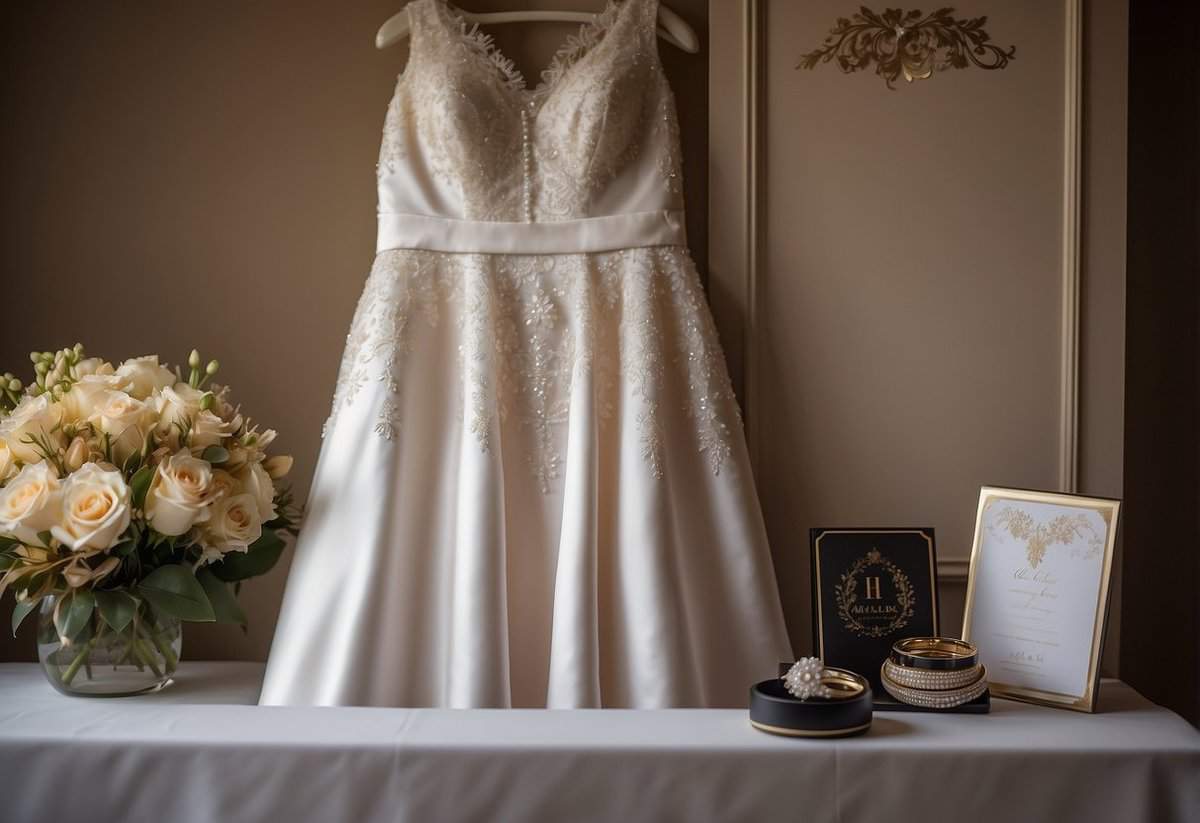
Embarking on the journey to your big day involves careful planning and attention to detail. Consider these fundamental steps to ensure your pre-wedding preparations lay a smooth path to a memorable marriage ceremony.
Selecting the Venue
Your choice of venue is pivotal as it sets the tone for your entire wedding. Start by researching options that align with your desired aesthetic and guest capacity. Be sure to inquire about the address, availability, and what is included in the rental. If you have a wedding planner, involve them in discussions as they can provide valuable insights and handle logistical aspects.
- Research venues online and visit top choices.
- Confirm availability for preferred dates.
- Enquire about facilities, restrictions, and catering options.
Creating the Guest List
Your guest list dictates the scale of your celebration. Start by listing immediate family and close friends before extending to wider circles. Remember, your guest count will impact your venue choice and budget.
- Begin with family and close friends.
- Factor in plus-ones and children.
- Revisit and refine to align with venue capacity and budget.
Setting the Budget and Planning
To avoid financial stress, be clear on your budget from the outset. Itemize your expenses, including venue, wedding dress, catering, and more. Allocate funds wisely and track your spending closely. This financial roadmap will guide your subsequent decisions.
- Determine a total budget based on your finances.
- Allocate funds to key elements: venue, attire, food, music, etc.
- Regularly review expenses to stay on target.
Finalizing Vendors and Services
Secure the services of reliable vendors for everything from photography to flowers. If a vendor is a crucial part of your day, such as the one for your wedding dress, make these appointments well in advance. Consider scheduling a rehearsal dinner to ensure everyone is on the same page.
- Book essential vendors early: caterer, photographer, DJ/band.
- Arrange tastings, fittings, and sample viewings.
- Plan a timeline for the wedding day with your wedding planner.
Ceremony Essentials
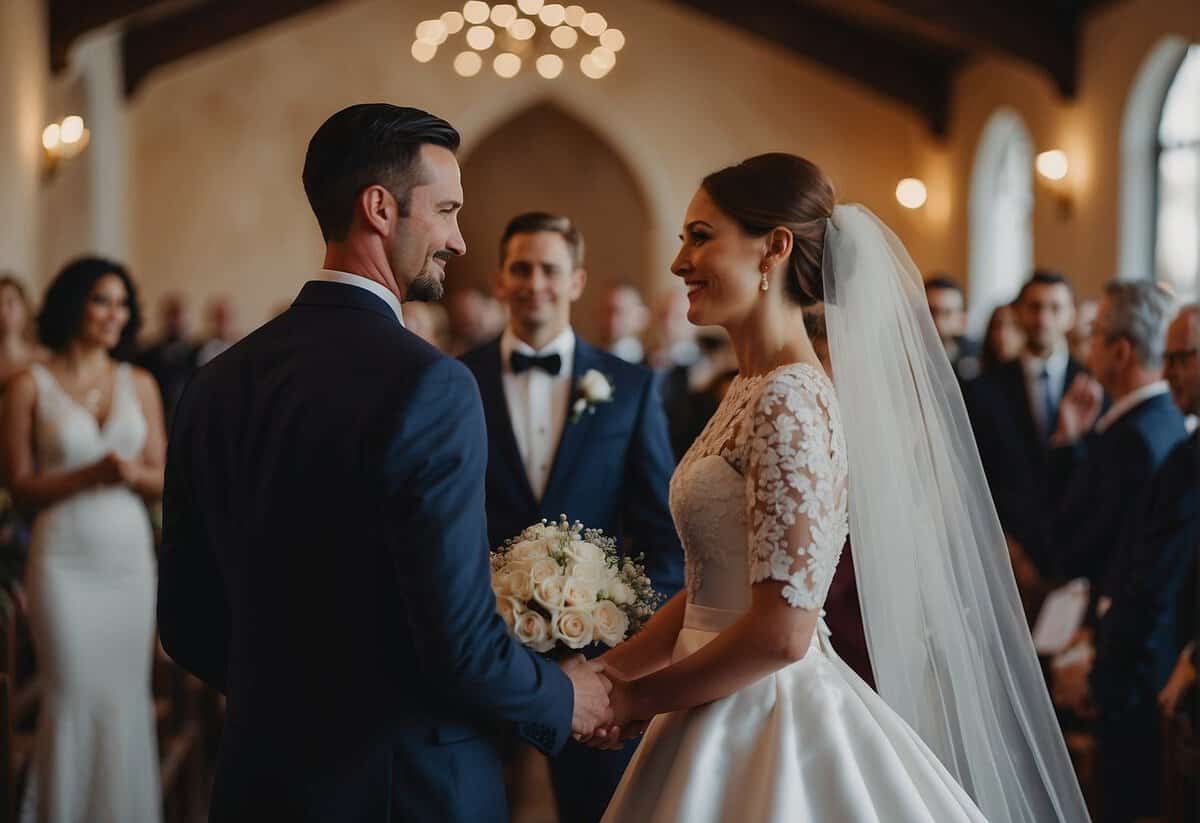
As you plan your wedding, understanding the ceremony essentials, such as the structure and roles involved, will ensure a smooth and memorable event. This part of your day will set the tone for the celebration as you affirm your love and commitment in front of friends and family.
Wedding Ceremony Outline
Your wedding ceremony typically follows a traditional order, starting with the processional where the wedding party and then you and your partner walk down the aisle. It leads into various readings, which can be either religious or non-religious in nature. After this, wedding vows are exchanged, a central and poignant part of the ritual where you express your promises to one another. Often, the ring exchange follows, symbolizing the physical reminder of these vows.
- Processional
- Readings
- Vows Exchange
- Ring Exchange
Choosing the Officiant
An officiant plays a pivotal role, guiding you through your wedding ceremony script and rites. For a religious ceremony, it’s commonly a priest, rabbi, minister, or an imam who fills this role. For those who opt for a non-religious wedding ceremony, any legally recognized individual such as a judge, or even a friend or family member who has obtained the legal right to perform marriages, can act as the officiant.
Order of Events and Rituals
The order of events includes a combination of traditions and personalized elements. The unity ceremony is an example of a custom that can be tailored; it may include a sand ceremony, lighting a unity candle, or another act signifying the coming together of two lives. Specific traditions also define various religious ceremonies, such as standing under a chuppah during a Jewish wedding ceremony or the seven steps taken together in a Hindu wedding ceremony. Other components include:
- Seating Arrangement: Directed by ushers, guests are seated according to relationship to the couple.
- Wedding Ceremony Music: Sets the ambiance and cues different stages of the ceremony.
- Ceremony Readings: May be religious texts or personal selections that resonate with you.
- Signing of the Register: Legal documentation of the marriage, often accompanied by music or a brief pause in the proceedings.
Remember to consider the logistics, such as your ceremony program which informs guests of the sequence, and ceremony readings that add depth to the event. Your chosen wedding officiant will typically help you finalize the details to ensure your ceremony reflects your collective values and traditions.
Cultural and Religious Traditions

When planning your wedding, understanding the deep-rooted cultural and religious traditions that can be woven into your ceremony makes the event more meaningful and personalized. These customs vary widely, reflecting the diversity of beliefs and practices around the world.
Specific Rituals and Their Significance
Different cultures incorporate unique rituals that symbolize the union of marriage. For instance, during a Jewish wedding, specific rituals like the bedeken (veiling ceremony) and the circling, where the bride circles the groom seven times, are deeply symbolic. The circle represents the creation of a new family bond. The breaking of the glass is another highlight that signifies the destruction of the temple in Jerusalem, reminding everyone of the fragility of relationships.
In Hindu ceremonies, the saptapadi, or seven steps, is a critical element where the couple takes seven steps together, each vowing a particular aspect of marriage. Another significant ritual is the kanyadaan, where the bride’s parents give away their daughter to the groom, symbolizing the union of two families.
Incorporating Customary Attire
Your wedding attire can also reflect cultural elements. In many traditions, clothing is more than just dress—it signifies the transition to a marital life. For example, the mangalsutra in Indian weddings is a sacred necklace that a groom ties around the bride’s neck signifying her marital status. In contrast, a Christian bride might opt for a white gown symbolizing purity, which is common in Western cultures.
Respectful Inclusions of Religious Elements
Integrating religious elements such as the chuppah in Jewish ceremonies or hymns in Christian ceremonies adds a layer of sanctity and tradition to the wedding. The chuppah represents the home the couple will build together. During Christian ceremonies, hymns are often sung to invoke God’s presence and blessings. The key to including such elements is to ensure that they’re done respectfully and in a way that feels authentic to you and your partner.
In Jewish tradition, the sheva brachot or seven blessings are recited over the couple, invoking divine favor. In a Hindu wedding, the baraat is the groom’s wedding procession, often marked by music and dancing. Whether you’re following a Christian procession or a Jewish procession, each step of the way is a reflection of faith and tradition.
Familiarizing yourself with these rituals, attire, and religious elements can help you plan a ceremony that respects your cultural and religious backgrounds while creating a memorable start to your married life.
The Big Day Timeline

Your wedding day has a natural ebb and flow, each part paving the way to your grand moment of becoming a lifelong partnership. Let’s walk through the key steps of the day.
Morning Preparations
Your wedding day kicks off with the morning preparations. This is the time when the bridal party and wedding party come together to dress up and get ready. Expect some nerves and excitement as makeup artists and hairstylists work their magic. It’s also a perfect moment for candid photos and sipping on mimosas. To stay within your wedding budget, remember to plan for these services in advance.
The Processional
As the ceremony starts, the processional marks the official beginning of your wedding. Everyone finds their place, with the wedding party leading the way down the aisle, creating a heartwarming prelude before your grand entrance. The order often begins with grandparents, parents, groomsmen, bridesmaids, and finally, you make your entrance, setting the stage for the exchange of vows.
Exchanging of Vows
After the procession and a few readings, you reach the heart of the ceremony: exchanging of vows. This is your moment to express your love and commitment, your promises for the future. Every guest’s attention will be on you as you share your carefully chosen words, uniting your lives with the power of speech.
Ring Ceremony and Pronouncement
The ring ceremony follows your vows. You’ll exchange wedding rings, symbols of your eternal love and commitment. After sliding the rings onto each other’s fingers, the officiant makes the pronouncement of marriage, declaring you as partners in life. Your hands connected, rings glistening, this is the moment that seals your union.
Recessional and Post-Ceremony
Finally, the recessional signifies the joyful conclusion of your ceremony. With the newlyweds leading the way, followed by the bridal party and family, you all walk back down the aisle to the sound of cheers and applause. Post-ceremony, it’s time for celebration, photographs, and starting the rest of your lives together. Remember, the ceremony is just the beginning—the rest of your wedding day awaits, offering opportunities for memories you’ll cherish forever.
Frequently Asked Questions
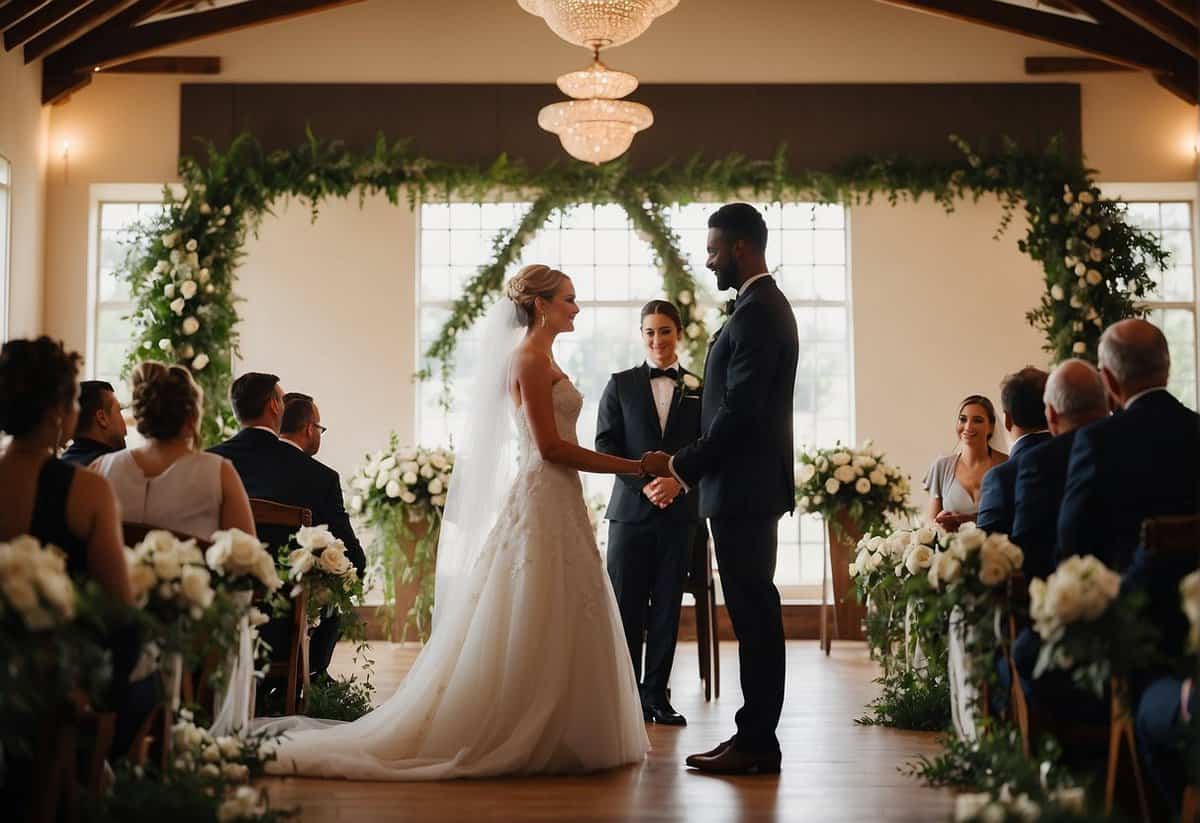
A wedding is a pivotal day full of traditions and sequences that might seem complex. In this section, we answer your most pressing queries on how a wedding unfolds step by step, helping you understand the script of a ceremony, the structure of a reception, and the overall flow of the wedding day.
What are the typical components of a wedding ceremony script?
Typically, a wedding ceremony script includes an introduction by the officiant, exchange of vows, ring exchange, pronouncement of marriage, and a kiss to seal the union. Additional elements may incorporate readings, music, and cultural rituals.
In what order do participants typically enter during the wedding processional?
During the wedding processional, the order often starts with grandparents, parents, groom, officiant, bridesmaids and groomsmen (sometimes paired), the maid of honor, ring bearer, flower girl, and concludes with the bride, who may walk down the aisle escorted.
How is a traditional wedding ceremony structured?
A traditional wedding ceremony is structured with a processional, welcome speech by the officiant, readings, exchange of vows and rings, pronouncement of marriage, kiss, and recessional. Cultural and personal touches are often added in between these elements.
What items are commonly included in a wedding ceremony program?
A wedding ceremony program typically lists the sequence of events, names of the wedding party, explanation of any cultural traditions, acknowledgments, and a brief thank you message from the couple.
Can you outline the sequence of events at a wedding reception?
The sequence at a wedding reception usually begins with a cocktail hour, followed by the newlyweds’ grand entrance, dinner service, toasts and speeches, first dance, parent dances, party dancing, cake cutting, bouquet and garter toss (if included), and lastly a farewell or send-off.
What are the key stages of a wedding day from beginning to end?
The key stages of a wedding day start with the pre-ceremony preparations, including hair and makeup, dressing, and photos. Next is the ceremony itself, followed by post-ceremony photos, the reception, and finally the after-party or couple’s departure.

